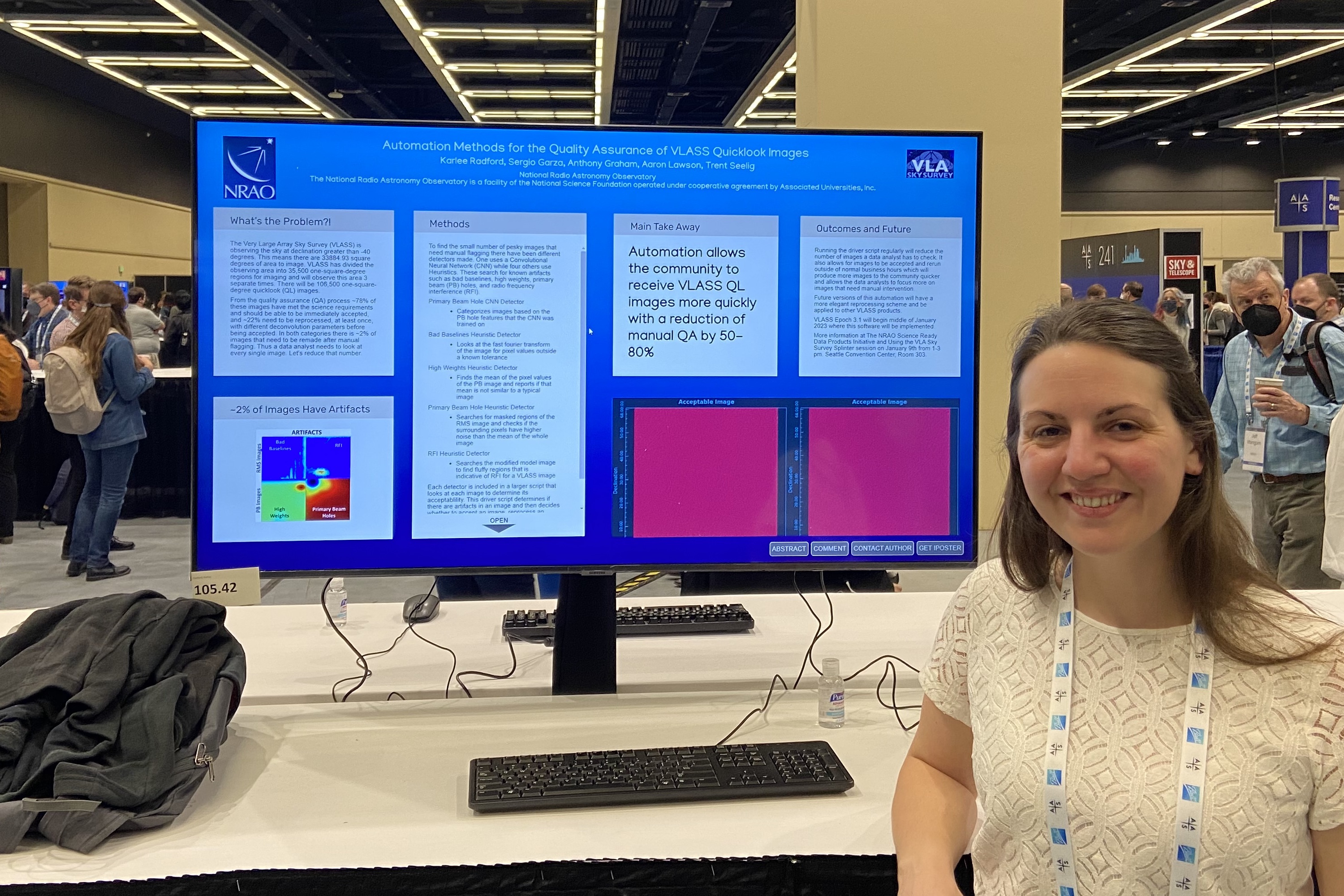It takes a lot of images to map the heavens. In order for the Very Large Array Sky Survey (VLASS) to create a map of 80% of the radio sky, the VLA must capture more than 35,000 square images, each about two moon widths across. And VLASS is looking at each area three times, so in total there will be 106,500 images. These are released as quicklook images. About 78% of them are processed automatically and ready for scientists to use. About 22% of them need to be reprocessed before they can be available to use. Some of the images have artifacts that are not true radio objects. The only way to tell is for a data analyst to look at every single image.
To reduce the number of images that need to be hand-checked, Karlee Radford, Operations Specialist at the VLA, looked at automating the decision process. Together with colleagues, Karlee studied how to run images through sorting software. One is a neural network, while the others are heuristic algorithms. Karlee found that this automation process reduced the need for manual quality assurance by 50% – 80%. The process also allows quicklook images to be released as they are processed, rather than waiting until regular business hours to be manually released.
In the future, Karlee and her colleagues plan to improve the automation process as well as extend automation to other VLASS data products.
Karlee presented these results at AAS241.






